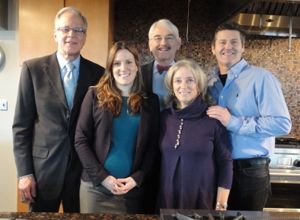50-Minute Classroom: The Rest of the Science
Tuesday, 01 April 2014 03:00 Combined with last month’s article from Chef Weiner on the basic science behind critical processes in the kitchen that all culinary students should understand, the following 10 precepts truly sum up any student’s “necessary science.”
Combined with last month’s article from Chef Weiner on the basic science behind critical processes in the kitchen that all culinary students should understand, the following 10 precepts truly sum up any student’s “necessary science.”
By Adam Weiner, CFSE
Two months ago I raised the debate about teaching cooking science to students. Last month I wrote part one of what I personally think are the principles of science that should be taught to beginning culinary students. Here is part two:

 As educators, we cannot not ignore what consumers of education seek. So why do many in education assume that teaching and training are mutually exclusive?
As educators, we cannot not ignore what consumers of education seek. So why do many in education assume that teaching and training are mutually exclusive? Career technical education (CTE) programs such as the National Restaurant Association Educational Foundation’s ProStart give students the skills and experience they need to achieve rewarding, long-term careers in the high-growth restaurant sector.
Career technical education (CTE) programs such as the National Restaurant Association Educational Foundation’s ProStart give students the skills and experience they need to achieve rewarding, long-term careers in the high-growth restaurant sector. CAFÉ’s second-annual Deans and Directors Retreat in February introduced a stellar line-up of thought leaders to passionate educators wishing to grow and strengthen their culinary-arts programs amid sweeping societal evolution.
CAFÉ’s second-annual Deans and Directors Retreat in February introduced a stellar line-up of thought leaders to passionate educators wishing to grow and strengthen their culinary-arts programs amid sweeping societal evolution. A simple concept conceived by the School of Culinary Arts at Kendall College turned out to be a powerful tool with which to teach culinary-arts students how to achieve impeccable flavor in every dish.
A simple concept conceived by the School of Culinary Arts at Kendall College turned out to be a powerful tool with which to teach culinary-arts students how to achieve impeccable flavor in every dish.